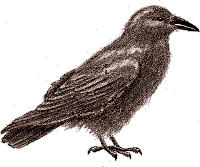
Dit is Raaf
De webpagina's van Erik Springelkamp
 |
Dit is RaafDe webpagina's van Erik Springelkamp |
Raaf
Categorieën
Archief
|
De Toekomst2015-01-27 14:49Een eigen gebouw voor de arbeidersbewegingThis afternoon I walked through the city and my eye was caught by a building I had never noticed before. When I searched it on the web, it proved to have an interesting history. It was the building of the first cooperation in the Netherlands (where the idea started a bit later than in the UK). From Your Royalty Fashion Reporter2013-05-02 18:01Appearance is everything for a modern monarchy, so let me offer you to do to the royals what they are made for. Look at their fashion statements: If you want to take the overview for yourselves first, you may look at this slide show: http://springelkamp.nl/Foto/Inhuldiging/capture_002_01052013_201648.jpg.html?slide=1 First we have crown prince Filip and princess Mathilde of Belgium. The prince is wearing a military uniform, the most common costume for kings and princes. A sash is obligatory, bearing a prestiguous Grand Cross. Both Belgians wear the appropriate Grand Cross of the Order of Orange-Nassau on their orange sash with white and blue edge:
Quite similarly in style, albeit much more attractive than the thick Belgian guy, are Norwegian crown prince Haakon and princess Sophie: (by the way, there are generally only crown princes and no acting monarchs present, because during the inauguration King Willem Alexander must be the highest ranking person, obviously)
Next in line, Spain, with crown prince Felipe and the former TV presenter princess Letizia, who doesn't wear the Orange-Nassau sash, but rather a blue and white one, probably the Spanish Order of Charles III, as that ribbon is present in her coat of arms. Maybe the Dutch royals haven't had the opportunity to offer her their nice insignes, or she prefers the blue white colours on her dress.
And Prince Guillaume, Hereditary Grand Duke of Luxembourg, and Hereditary Grand Duchess Stéphanie offer us the same kind of decorations, she probably wearing the Grand Cross of the Order of Adolphe of Nassau.
We now see the non-European crown prince Billah and princess Sarah of Brunei. They wear a different sash, the Grand Cross of the Order of the Crown, a House order of Orange. We will discover that she is the only woman wearing a headscarf.
And here is a prince who has received that Grand Cross of the Order of the Crown already before the previous Dutch inauguration, crown prince Charles. Camilla probably hasn't entered the circle of friends of Orange yet, as she is wearing a Royal Victorian Order (my guess).
First prince in civil dress, now, Prince El Hassan bin Talal and princess Sarvath El Hassan of Jordan, both with the now familiar Order of Orange-Nassau.
The highest royal guests, crown prince Naruhito en princess Masako of Japan. He has a Order of the Crown, but she wears the Japanese Order of the Precious Crown, specially for female recipients. She must have chosen it for the appropriate colour!
Crown prince Maha Vajiralongkorn and prinses Maha Chakri Sirindhorn of Thailand, they wear their own Order of the Royal House of Chakri.
Heredery prince Alois en heredery princess Sophie of Liechtenstein. I couldn't identify their red sash, was hoping it would be a Golden Fleece, that uses a red sash, and, being founded by the Burgundy House, was partially inherited by the Austrian Hapsburgs, but a complete list of members doesn't mention them.
Crown prince Frederik of Denmark has a nice hat, and a nice princess Mary. They wear the light blue Order of the Elephant over their left shoulder.
Swedish crown princess Victoria and prince Daniel have a similarly coloured Royal Order of the Seraphim over the right shoulder. And she has a nice hat.
Now two unchaperoned unveiled muslim princesses, Sheikha Moza bint Nasser al Misned from Qatar
and prinses Lalla Salma of Morocco. They don't need a sash, do they?
A daguerreotype from 18462009-02-05 23:20This evening there was a news item about a daguerreotype from 1846 from Surinam.
Gerrit Komrij2008-04-11 22:02De zittende politicus
Categorieën:
Politiek
|
|||||||||||||||||||||||||||||||||||
| Top |